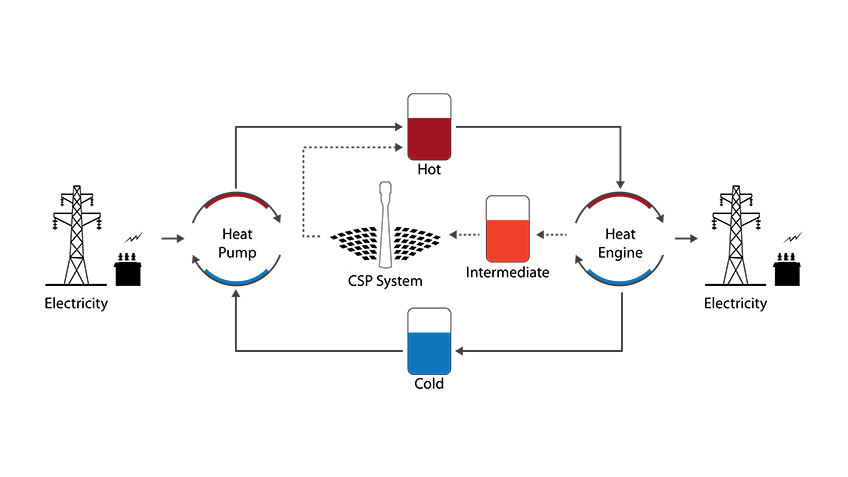Pumped Thermal Electricity Storage
NLR researchers integrate concentrating solar power (CSP) systems with thermal energy storage to increase system efficiency, dispatchability, and flexibility.

NLR researchers are leveraging expertise in thermal storage, molten salts, and power cycles to develop novel thermal storage systems that act as energy-storing "batteries." Known as pumped thermal electricity storage—or PTES—these systems use grid electricity and heat pumps to alternate between heating and cooling materials in tanks—creating stored energy that can then be used to generate power as needed. Coupled with CSP systems, this new technology can increase plant efficiency, dispatchability, and availability, while offering electricity storage services—whether or not the sun is shining.

PTES systems use grid electricity and heat pumps to alternate between heating and cooling materials in tanks, creating stored energy that can be used to generate power as needed.
Early-stage research is focused on identifying and modeling technology solutions that offer geographically independent, long-duration thermal storage using economical, nontoxic materials. Researchers are developing transient thermodynamic and economic models, then assessing the systems' potential economic performance using grid analysis tools in collaboration with NLR's Integrated Devices and Systems group.
In addition to coupling with CSP plants, PTES could be used in the future to boost the flexibility and efficiency of other systems, including solar photovoltaic and wind farms as well as geothermal, nuclear, and fossil fuel plants.
Contact
Share
Last Updated Dec. 7, 2025
